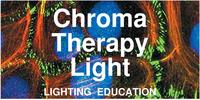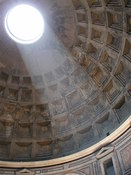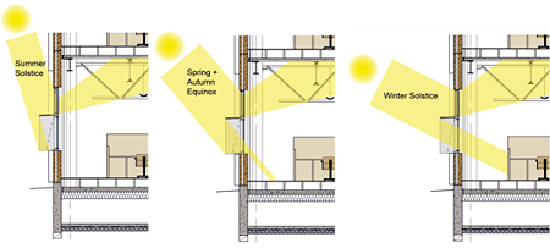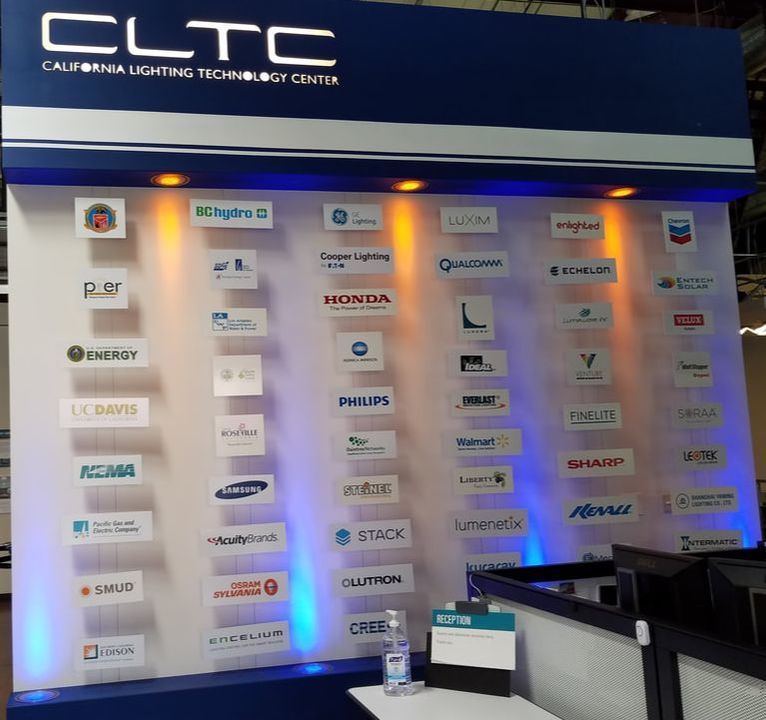Learning ObjectivesDaylighting DefinedDaylight is direct or diffused light from the sun. Daylighting is a term applied to building design that includes natural daylight as a light source including windows, clerestory windows, skylights, light tubes, and atriums.
Shading SystemsDirect sun is glaring and shading is part of a good daylighting scheme. As will all well designed buildings, thorough consideration or optimizing daylight needs to be included early in the design process. Maintenance of any moving parts needs to be included in the building design, solutions include:
Daylighting - Whole Building Design Guide - Design Recommendations
Whole Building Design Guide (WBDG) by Gregg D. Ander, FAIA
Southern California Edison "Implementing daylighting on a project goes beyond simply listing the components to be gathered and installed. Daylighting requires an integrated design approach to be successful, because it can involve decisions about the building form, siting, climate, building components (such as windows and skylights), lighting controls, and lighting design criteria. This overview is intended to provide specific details for Federal agencies considering daylighting technologies as part of a new construction project or major renovation. " [1] The goal of 'Whole Building' Design, a program of the National Institute of Building Sciences, is to create a successful high-performance building by applying an integrated design and team approach to the project during the planning and programming phases. Updated by U.S. Department of Energy Federal Energy Management Program (FEMP) Updated: 09-15-2016 https://www.wbdg.org/resources/daylighting Lighting Controls & Daylight AreasThe state of California Building Efficiency Standards Title 24 mandates specific lighting controls for commercial spaces. Buildings over certain sizes are required to include daylighting and separate controls for artificial lighting of areas within and adjacent to daylighting.
ReflectanceVisit Seniors and Low Vision page for more on reflectance.
|
CLTC releases new Daylight Harvesting Guide
New CLTC Publication on Daylight Harvesting for Commercial BuildingsThe CLTC is excited to announce a new publication in our Lighting Best Practices series, the Daylight Harvesting for Commercial Buildings Guide! This publication provides guidance towards meeting and exceeding California's Building Energy Efficiency Standards for daylight harvesting.
Daylight design guidelines and associated Energy Standards are provided in an easy to read, side-by-side layout, organized into sections for each building-related discipline that impacts daylight performance from building siting, through architectural and interior design, to construction, commissioning and operation. This publication was developed with support from Southern California Edison and the California Energy Commission. Support was also provided by the University of California, Davis [2] Publication Date: 08/27/2018 Download the guide 90 page PDF Glare - consider glare in your daylighting designGlare is the effect of brightness or differences in brightness within the visual field sufficiently high to cause annoyance, discomfort or loss of visual performance.
Glare – Disability Glare If task performance is affected, it is called disability glare Glare – Discomfort Glare Visual discomfort caused by excessive brightness is called discomfort glare. Glare – Direct Glare Glare resulting from very bright sources of light in the field of view. It usually is associated with bright light from luminaires and windows. A direct glare source may affect occupant’s performance by reducing the apparent contrast of objects in the field of view, especially those near the source of light. Glare – Indirect Glare Glare produced from a reflective surface. Glare – Reflected Glare or Veiling Reflection Glare resulting from bright reflections from polished, glossy, or illuminated objects and surfaces in the field of view. Veiling reflections reduce visual contrast and make it difficult to complete seeing tasks such as reading glossy magazines or looking through windows or at computer screens. Often windows or light fixtures will reflect off surfaces obscuring what is beneath, anticipate this visual obstacle by careful placement of lights, windows, and tasks. Remember with glare, 'the angle of incidence equals the angle of reflection' just like billiards. Visual Comfort Probability (VCP) A rating system for evaluating direct discomfort glare. This method is a subjective evaluation of visual comfort, when viewing from a specific location and in a specified direction, expressed as the percent of occupants of a space who will be bothered by direct glare. VCP allows for several factors: luminaire luminances at different angles of view, luminaire size, room size, luminaire mounting height, illuminance, and room surface reflectivity. VCP tables are often provided as part of photometric reports. Daylight hourLearn More
Footnotes
Photo Credits
|
- Home
-
- CHROMA Topics
- Color Spectrum - Light is Energy
- Color in Light
- Color in Nature
- Color in Paint
- Why does paint fade?
- Color Names & Meanings
- Color Phenomena
- Color Perception is Individual
- Color In Fashion
- Color for your home
- Color in Space
- Color Blindness
- Color Blind Interview
- Synesthesia
- Synesthete Deborah Borrowdale-Cox
- Synesthete Stephen Orr, BH&G Editor
-
- Circadian & THERAPY Topics
- Circadian Explained
- Circadian Ganglion Cells
- Circadian Melatonin
- Circadian Animals
- Circadian Research
- Autism & Lighting for the Spectrum
- Blue Light Dimming Apps
- Red Night Lights
- Vitamin D & Light
- SAD - Seasonal Affective Disorder
- Alzheimers and Light Therapy
- Photosensitivity - Light Sensitive Drugs
- Red Light Therapy
- Sleep & Lighting
- Dreams and Second Sleep
- NASA - Lighting in Space & Undersea
- Jet Lag
- Sunglasses
- Chakras
- Crystals, Minerals, & Gemstones
-
- LIGHTing Design Topics
- UV Germicidal Disinfection Light
- LED Lighting Facts Card
- CRI - Color Rendering Index
- LED TM-30
- LED Kelvin Color
- LED LPW
- LED Flicker
- LED Glare
- OLED - Organic LED
- Human Centric Lighting
- Lighting with Daylighting
- Lighting for Healthy Buildings & Zero Net Energy
- Lighting for Healthcare
- Lighting for Horticulture
- Lighting for Hospitality & LED Retrofits
- Lighting for Museums
- Lighting for Seniors & Low Vision
- Lighting Design Tips & Codes
- Parking Lot Lighting
- Solar Lighting for Humanity & World Health
- Davis Insectary Garden
- Santa Barbara Mesa Insectary Garden
- Home
-
- CHROMA Topics
- Color Spectrum - Light is Energy
- Color in Light
- Color in Nature
- Color in Paint
- Why does paint fade?
- Color Names & Meanings
- Color Phenomena
- Color Perception is Individual
- Color In Fashion
- Color for your home
- Color in Space
- Color Blindness
- Color Blind Interview
- Synesthesia
- Synesthete Deborah Borrowdale-Cox
- Synesthete Stephen Orr, BH&G Editor
-
- Circadian & THERAPY Topics
- Circadian Explained
- Circadian Ganglion Cells
- Circadian Melatonin
- Circadian Animals
- Circadian Research
- Autism & Lighting for the Spectrum
- Blue Light Dimming Apps
- Red Night Lights
- Vitamin D & Light
- SAD - Seasonal Affective Disorder
- Alzheimers and Light Therapy
- Photosensitivity - Light Sensitive Drugs
- Red Light Therapy
- Sleep & Lighting
- Dreams and Second Sleep
- NASA - Lighting in Space & Undersea
- Jet Lag
- Sunglasses
- Chakras
- Crystals, Minerals, & Gemstones
-
- LIGHTing Design Topics
- UV Germicidal Disinfection Light
- LED Lighting Facts Card
- CRI - Color Rendering Index
- LED TM-30
- LED Kelvin Color
- LED LPW
- LED Flicker
- LED Glare
- OLED - Organic LED
- Human Centric Lighting
- Lighting with Daylighting
- Lighting for Healthy Buildings & Zero Net Energy
- Lighting for Healthcare
- Lighting for Horticulture
- Lighting for Hospitality & LED Retrofits
- Lighting for Museums
- Lighting for Seniors & Low Vision
- Lighting Design Tips & Codes
- Parking Lot Lighting
- Solar Lighting for Humanity & World Health
- Davis Insectary Garden
- Santa Barbara Mesa Insectary Garden









